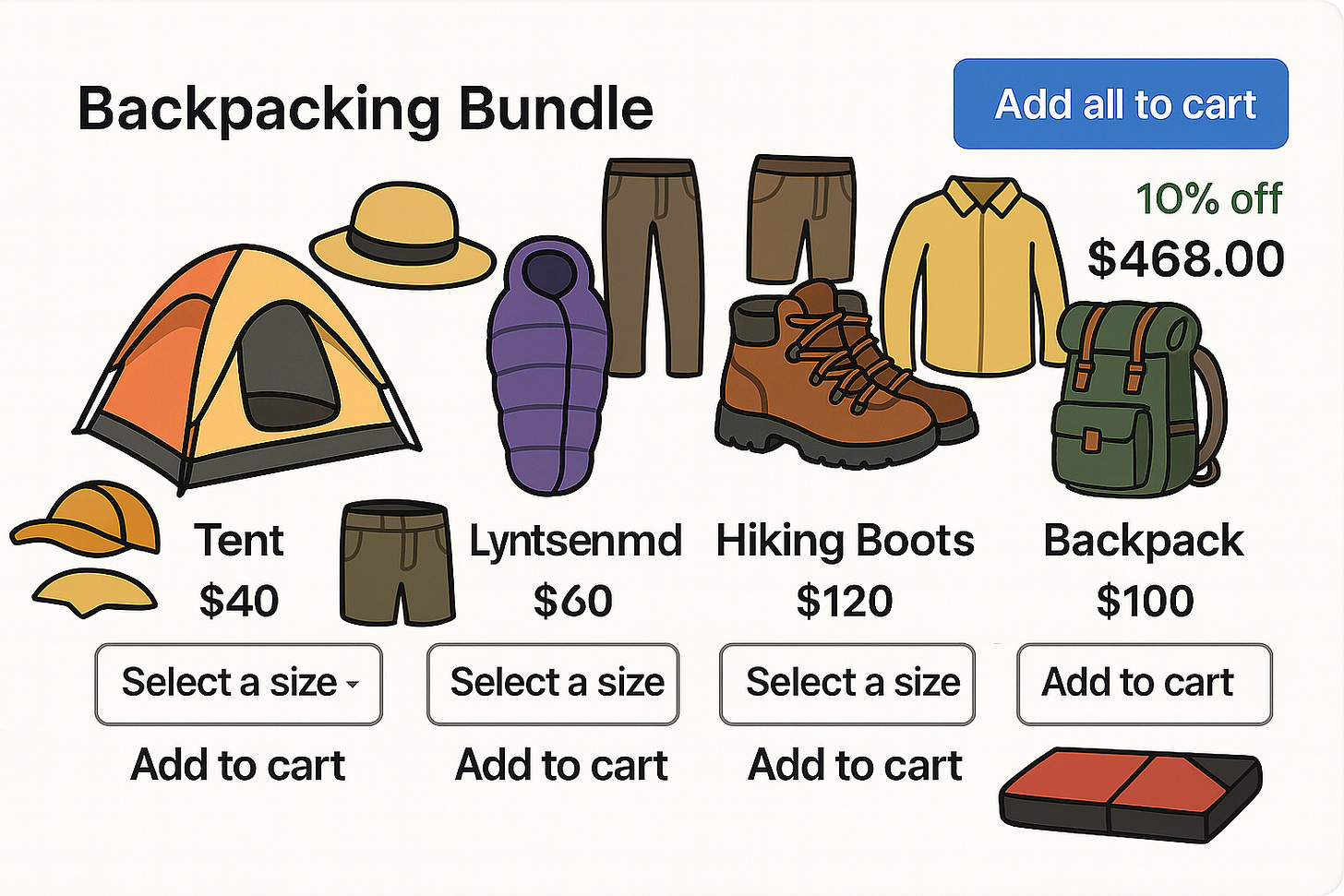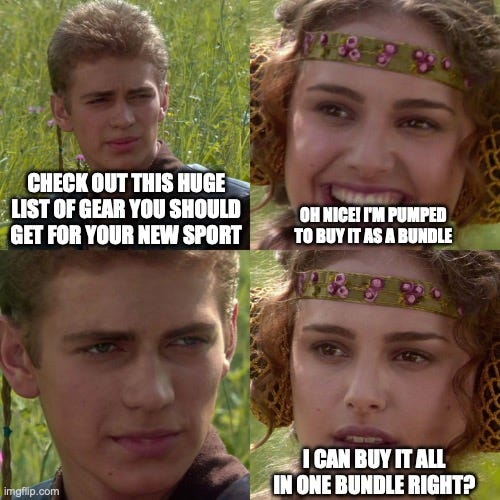Recess #15: Bundle Your Home Insurance, Auto Insurance, and Climbing Gear
Outdoor gear retailers and manufacturers don't make it trivial to buy "starter kits" and bundles of their related gear online... why?
If you're like me, you've fallen hard down the rabbit hole of a new gear-heavy outdoor hobby in the past, be it backpacking, trail running, fly fishing, mountain biking, cross country skiing, or any of the other myriad of options. Whenever I’m on the precipice of jumping into a new hobby (either because I know nothing about it and it looks interesting, or because I’ve tested it once and instantly assume it will become more fun with greater time commitment and better equipment), what often restrains me from committing immediate financial negligence is the process to actually acquire all the new gear for the activity. This process typically breaks down into two steps: first, figuring out what gear of what quality/price is necessary for the activity; and second, actually sourcing it all in a seamless manner.
Thankfully, it’s easy to reliably follow a simple set of steps to accomplish task one— you start by somewhat shamefully Googling “gear for [insert outdoor activity here].” Of course, a long set of search results greet you— some from independent review entities like Gearlab or Switchback travel, some from Reddit threads in the related subreddit communities, and if you’re lucky, some from gear recommendations from vendors themselves. This final group can often include long checklist-like articles (“listicles”) from consolidated distributors like REI or Backcountry, and even individual gear companies like Patagonia or Black Diamond. No matter the source, the outcome of this first step is usually the same— you’re left with a long list of gear and links with no easy way to purchase it all at once, even if you’ve dug into a great breakout of gear “bundles” at different price points.

The intelligent shopper will often find the fastest way to the purchasing step by picking the firtst list of required gear from a reliable source and begin to hunt down links for all the individual pieces of gear either from multiple gear sites, or within one. However, shoppers like me stress over purchases and assign arbitrary weights to the many reviews and user OpEds before finally settling on a set of gear that I would like to purchase. Most often, this process lands me with a selection of gear close to what one of the individual guides recommended in the first place. If I’m still motivated to purchase a whole set of new gear and haven’t been dismayed by the estimated cost of the purchases having thought about them for a long time now, I’ll also transition to the purchasing phase and go click a lot of individual links and check carts and sizes and spend a lot of time actually purchasing the gear online (at least in internet time increments).
As intimated above, the transition to purchasing and the act of purchasing itself can often feel cumbersome regardless of how efficient of an online shopper you are. I think the pervasive nature of the activity gear guide → individual item shopping process drives a lot of this friction, and that doesn’t just mean for the REI example above. Their main philosophical competitor in Backcountry and individual gear companies like Black Diamond also follow the same purchasing path! They often provide really detailed lists of gear with expert recommendations, but stop short of actually bundling these recommendations for a faster sale (with some exceptions, REI does have some great basic bundles for some more common activities like car camping, you just have to hunt for them).
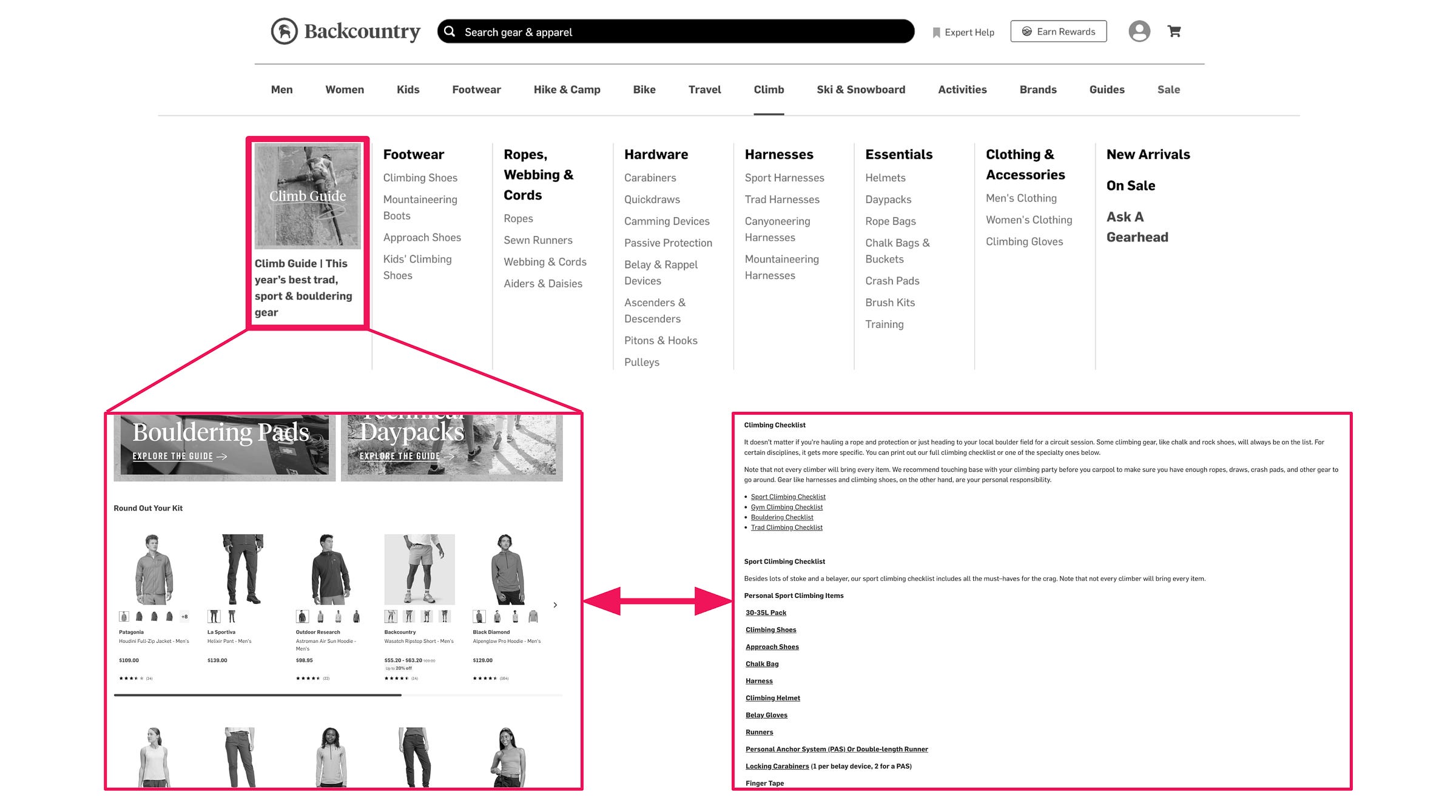
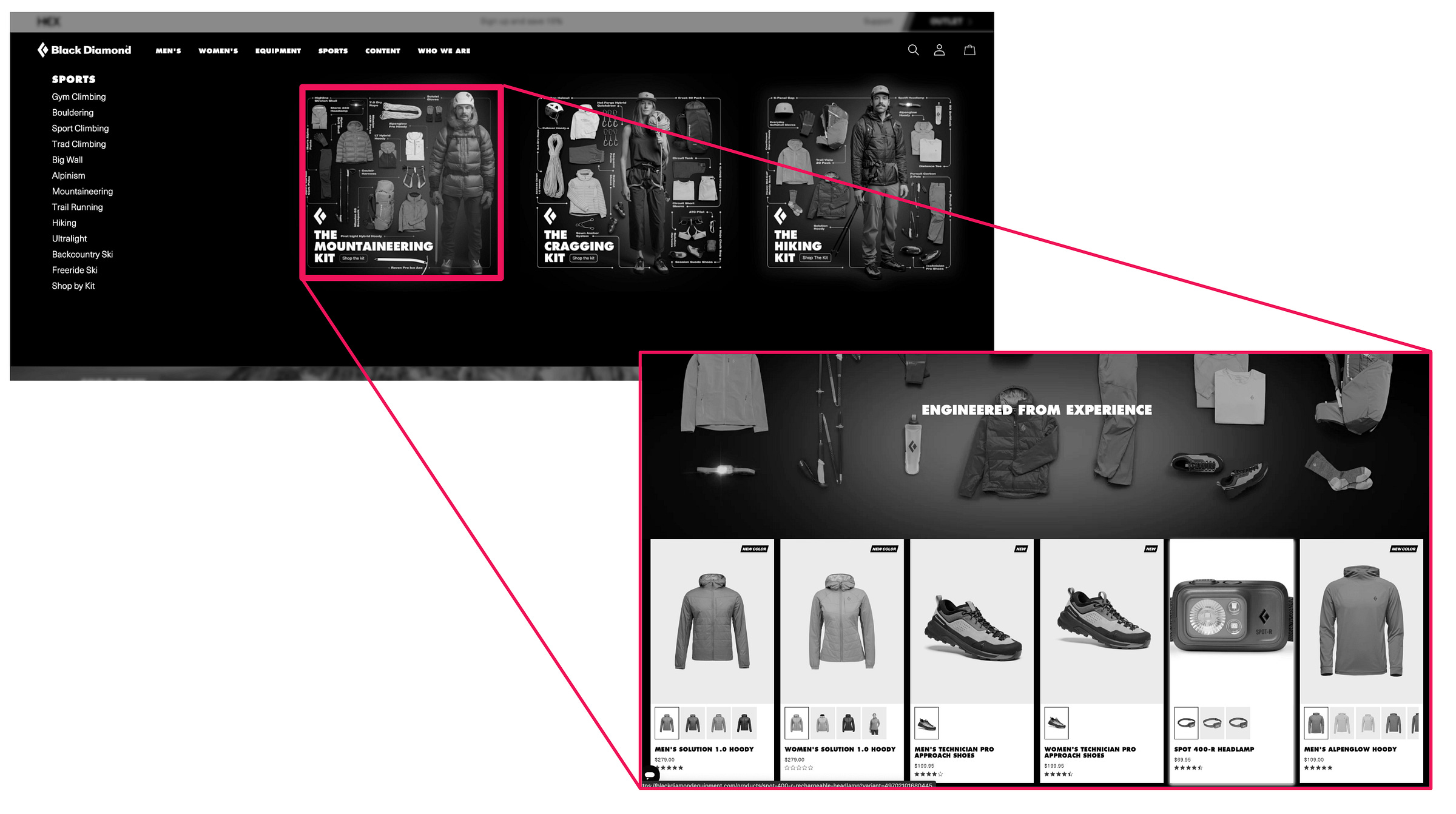
In stark contrast to this relatively drawn-out online shopping experience, I really wish that gear companies leaned into the concept of “bundles” or “starter kits” more heavily, especially for beginner/intro sets of gear and kids gear. Instead of navigating numerous tabs and cross-checking lists while slowly losing momentum for my purchases as I see the cost creep up, most gear vendors would benefit significantly from having a “buy bundle” option, which seems to be surprisingly lacking when purchasing a whole set of gear. From what I can tell, Near Zero is perhaps one of the only gear manufacturers who actually executes such a tactic as a main purchasing option, and it even comes with a discount!
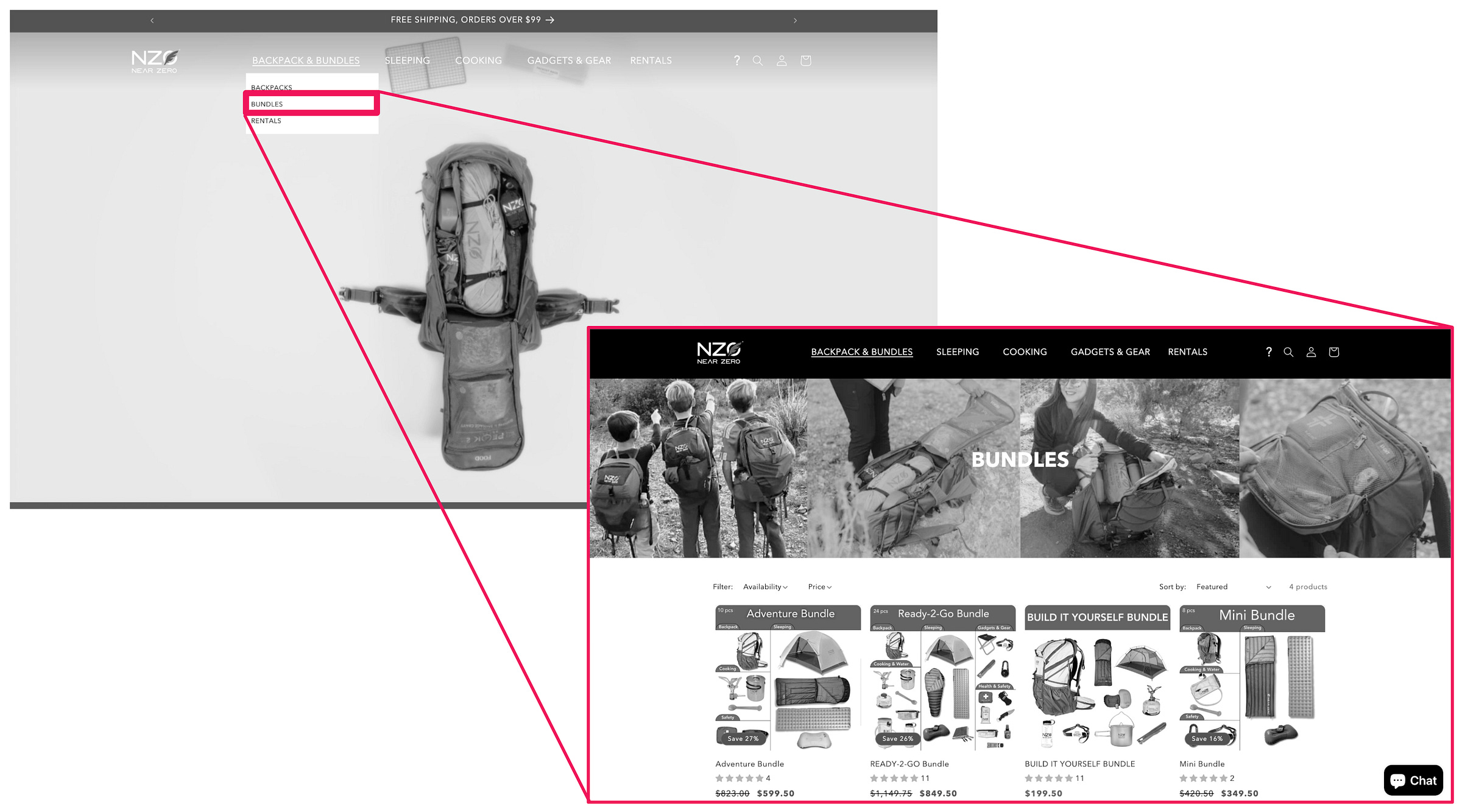
Ironically, a successful model for this type of shopping already exists in many gear distribution companies in the form of rental packages. When you travel to visit a resort without any ski gear, you can typically find a wide variety of full skiing packages available from local shops. These might include different qualities of gear and include different items— from a basic set of skis, boots, and poles all the way up to a full skiing outfit and gear. Maybe shoppers are more hesitant to make consolidated bulk gear decisions for items they want to own as opposed to rent, but I think that thought process obfuscates the fact that most busy shoppers— and definitely most parents— often look for a quick way to get the required products they need for an activity and don’t require the nuance and choice I personally love.
With that said, though, even I would be highly tempted to purchase bundles of gear for different outdoor activities if they came with some sort of notable discount or rewards for a specific brand. I personally don’t have enough brand loyalty to eschew a Mammut gear set in favor of a Patagonia or Arc’teryx set if the Mammut set of gear was 20% cheaper because I bought it all as a package. This thread quickly weaves back into some of my broader questions about the gear industry’s use of product ecosystems and customer rewards programs. Someday I’d love to know what gear companies and vendors have tested with their customers, because I feel like a lot of room for more creative sales approaches exist in the market today.
To avoid losing control of the narrative, I do want to turn back to what I think could represent a more streamlined shopping experience for a full set of gear. In description, I think the process adheres to the flow of: 1) Click on gear guide link, 2) See list of gear bundles available with price and discount clearly denoted (below them could be a comparison table of what is included), 3) Click the desired bundle to get a page with more detail on the gear, a gender selection (if applicable) and a single “Add to Cart” button, 4) In the cart itself, pick your sizes and add any extra items to have the discount apply to them as well. With my extremely limited wire-framing skills, I think an introductory layout like below could be a huge boon for vendors, especially those looking to lock customers into their gear eco systems
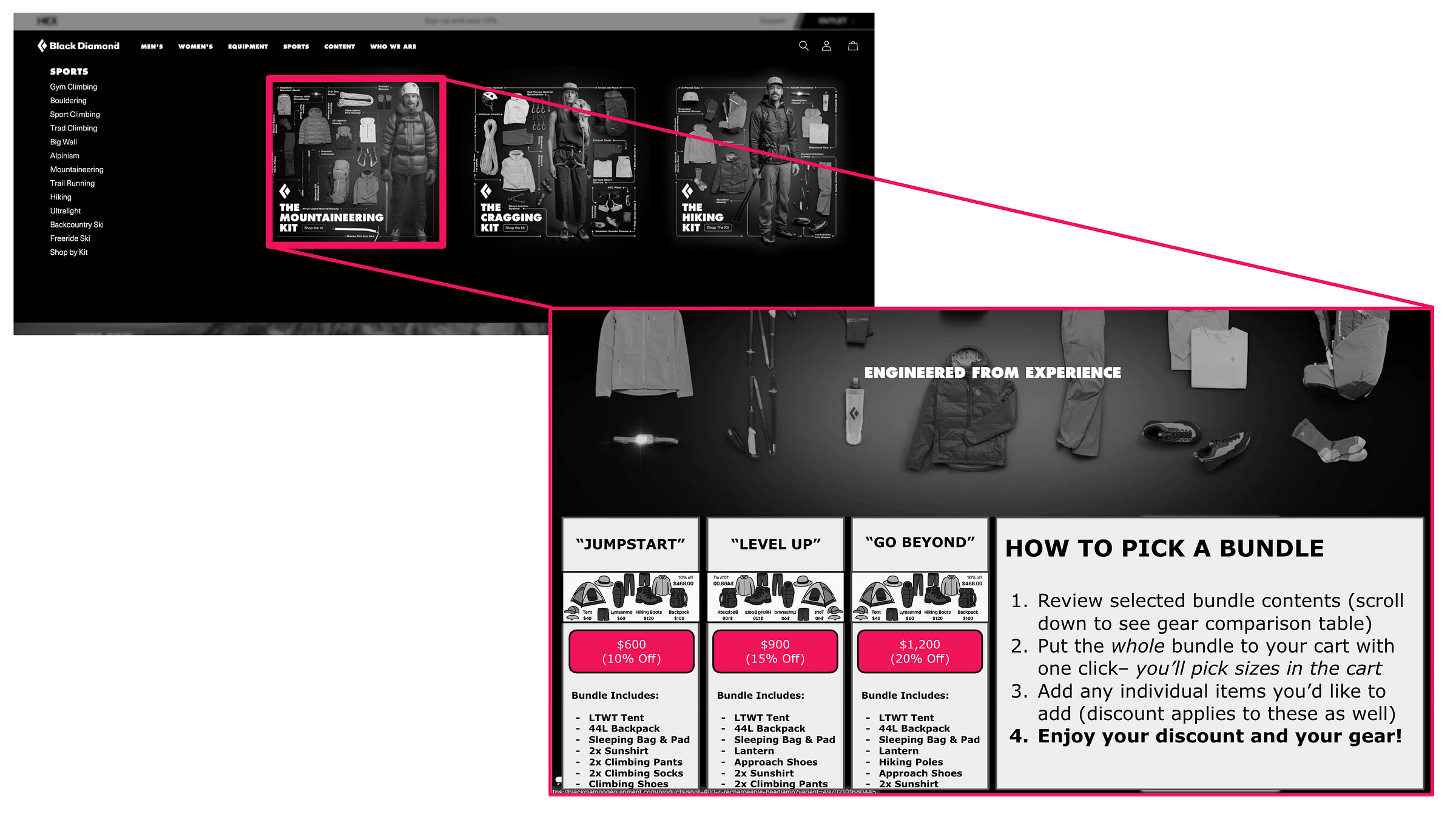
Ideally, the online gear shopping experience never becomes more burdensome than the in-store experience where you ask an associate for assistance and they’re off to the races selecting gear for you. Again, I don’t think what I am suggesting is for absolutely everyone, but I think it could be for most people. Replace the long process of battling through a huge set of tabs and confusing articles with simple purchasing pages and gift-givers, rapid shoppers, and people shopping for kids will all celebrate. What could be an hour+ activity gets converted into a 5-10 minute process. If the gear rental market proves anything, it’s that there’s some level of commitment to a full set products that customers are willing to make, and I don’t think we’ve reached the limits of that commitment duration yet.
Regardless, I hope this quasi-article, quasi-rant will start a groundswell of feedback for gear companies and distributors to start bundling products so we can shop more efficiently and cheaply. Also please feel free to shop the bundles from my AI-generated storefront— the Lyntsenmd is to die for!
End rant/ There’s the Bell!





